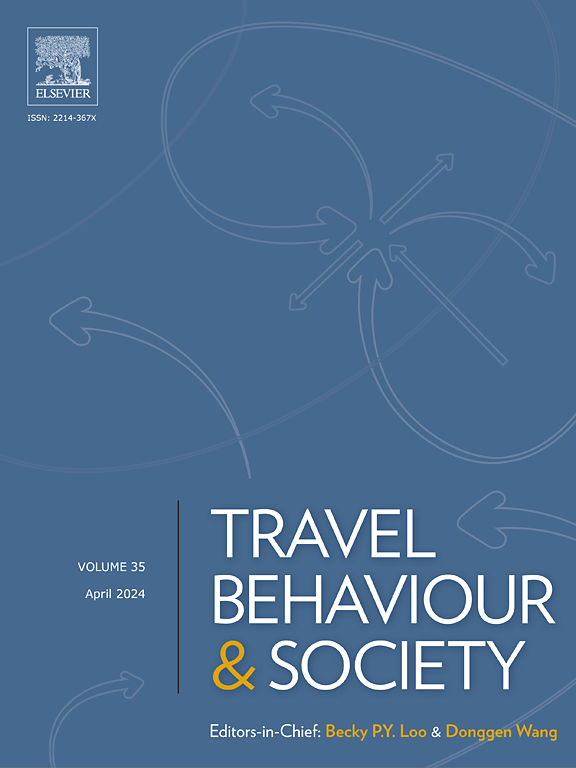利用手机大数据了解老年人步行行为的时空格局
IF 5.7
2区 工程技术
Q1 TRANSPORTATION
引用次数: 0
摘要
老年人步行行为的特征可以为发展老年人友好型未来提供见解。然而,很少有人关注老年人在大空间和时间尺度上的行走行为。本研究利用手机大数据解码老年人步行行为的时空模式,并以中国深圳为例进行研究。我们确定了2021年4月至9月期间超过2700万次老年人步行旅行,并利用人口普查数据验证老年人手机数据的代表性。结果表明,老年人的步行出行主要集中在城市地区和郊区副中心。城市社区老年人步行出行的平均次数是郊区的3.8倍。我们量化了老年人和年轻人步行空间模式的差异,发现城市地区存在显著差异,88%的城市社区老年人步行出行比例较高。在时间模式上,老年人步行出行的开始和结束时间普遍早于年轻人,并且没有明显的高峰时间。老年人步行行为的独特时空模式凸显了有针对性地设计可步行和包容性城市的必要性。本文章由计算机程序翻译,如有差异,请以英文原文为准。
Understanding spatiotemporal patterns of walking behavior of older people via mobile phone big data
The characteristics of older adults’ walking behavior can provide insights for developing an age-friendly future. However, minimal attention has been given to the walking behavior of older adults on a large spatial and temporal scale. This study leveraged big data from mobile phones to decode the spatiotemporal patterns of seniors’ walking behavior, using Shenzhen, China, as a case study. We identified over 27 million elderly walking trips from April to September 2021 and utilized census data to validate the representativeness of older adults’ mobile phone data. The results showed that older adults’ walking trips were largely clustered in urban areas and suburban subcenters. The average number of senior walking trips in urban neighborhoods was 3.8 times higher than in suburbs. We quantified the differences in walking spatial patterns of seniors and younger adults, and found a prominent disparity in urban areas, where 88% of urban neighborhoods had a higher proportion of walking trips for seniors. Regarding temporal patterns, elderly walking trips generally started and ended earlier than those of younger people, and did not have significant peak hours. The unique spatiotemporal patterns of walking behavior of older adults highlight the need for targeted efforts to design walkable and inclusive cities.
求助全文
通过发布文献求助,成功后即可免费获取论文全文。
去求助
来源期刊

Travel Behaviour and Society
TRANSPORTATION-
CiteScore
9.80
自引率
7.70%
发文量
109
期刊介绍:
Travel Behaviour and Society is an interdisciplinary journal publishing high-quality original papers which report leading edge research in theories, methodologies and applications concerning transportation issues and challenges which involve the social and spatial dimensions. In particular, it provides a discussion forum for major research in travel behaviour, transportation infrastructure, transportation and environmental issues, mobility and social sustainability, transportation geographic information systems (TGIS), transportation and quality of life, transportation data collection and analysis, etc.
 求助内容:
求助内容: 应助结果提醒方式:
应助结果提醒方式:


